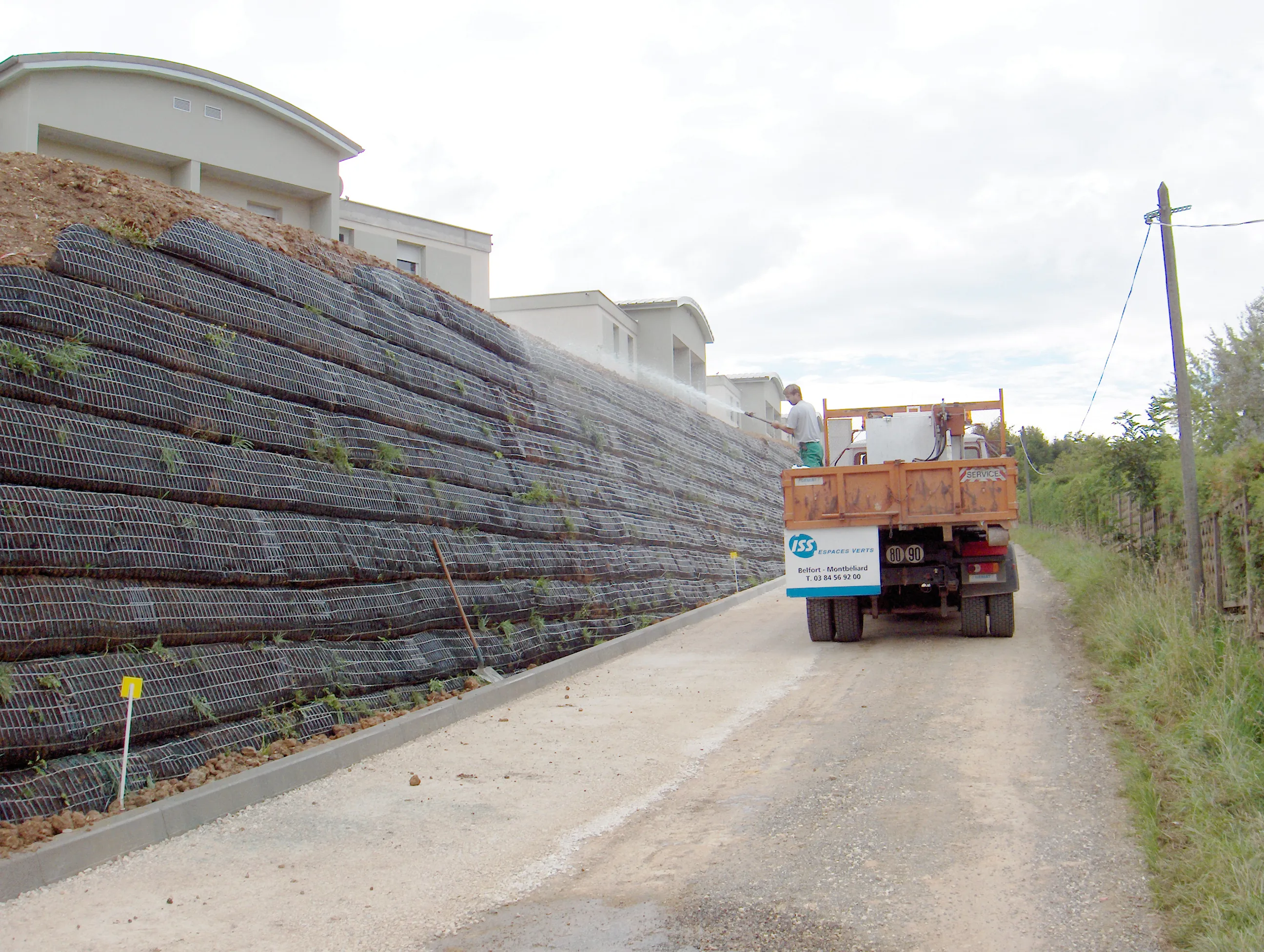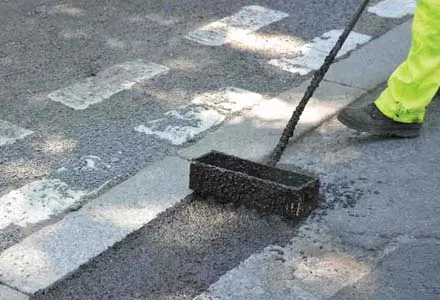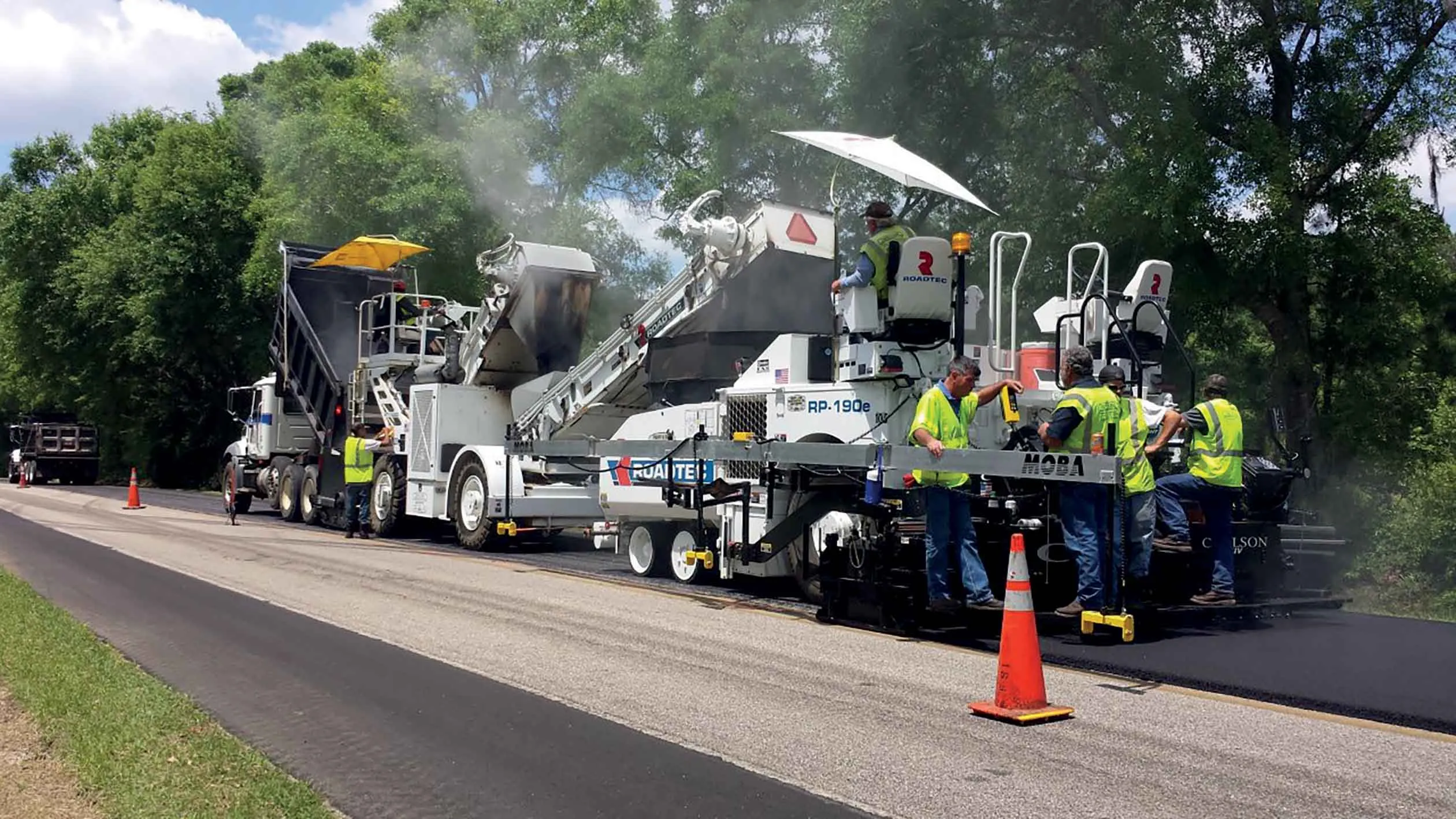Using geosynthetics for soil reinforcement is highly effective but requires a high quality and trusted geogrid.
When it comes to deciding which geogrid is best for a specific project, a number of product parameters must be taken into account. In the design of steep slopes, the most important parameter is the available long term design strength (Pdes). Recently, Colbond has significantly increased this factor for its high performance Enkagrid product, recognised with a newly updated BBA (British Board of Ag
March 14, 2012
Read time: 6 mins

Using geosynthetics for soil reinforcement is highly effective but requires a high quality and trusted geogrid.
When it comes to deciding which geogrid is best for a specific project, a number of product parameters must be taken into account. In the design of steep slopes, the most important parameter is the available long term design strength (Pdes).Recently,
"In practice this means that less material may be required to achieve the same performance in soil reinforcement," says Colbond.
More useable design load
The equation for the available long term design strength (shown in the technical overview) shows the influence of various partial factors on the ultimate strength of the product. Typical factors reflect damage, chemical attack and the extrapolation factor."Another factor (and one with the highest influence) is the creep value. Thanks to its design incorporating extruded and laser-welded polyester straps, Enkagrid demonstrates significantly improved performance for this value. Thanks to continuous product development and long term creep testing, Colbond has increased the Pdes for Enkagrid by as much as 8%," says Colbond.
"As can be seen in the technical overview, Enkagrid's damage factor, due to installation damage, and also its chemical attack factor, is very low, below those for grids manufactured from yarns. The reason for this is due to Enkagrid's structure of extruded polyester straps that has a very low surface area in relation to its volume." The use of different types of polymer in grids is a point of interest on its own, as it has a large effect on the ultimate strength. For example, to match the performance of Enkagrid PRO 60 which has a UTS (ultimate tensile strength) of 60 kN/m, one would need an HDPE (high-density polyethylene) grid of approximately 90 kN/m UTS, says Colbond.
Enkagrid is available in strengths ranging from 20kN/m to 180 kN/m UTS. Over the past decades Enkagrid and earlier grids have been used in many projects worldwide.
BBA certificates The above equation from BS 8006 and BBA certificates of grid reinforcement materials shows how the allowable design load can be obtained for a geogrid using values taken from the respective BBA certificates for use in a soil of coarse gravel with pH value of between 4 and 8.9 and a design life of 60 years.
The company says that calculations for its Enkagrid PRO 60 compared to an extruded HDPE geogrid of 88kN/m characteristic strength show that more design load is available from Enkagrid manufactured from polyester straps than from an extruded HDPE grid, and this "translates into cost savings for the client."
Durable solution
Meanwhile, geosynthetics specialistIts Tensartech line is said to provide an integrated solution that also comes with an array of masonry block finishes. In addition the range is backed by reliable support services and new software.
The finished appearance can be specified to meet local requirements while the Tensartech TW1 and TW3 wall systems are said to offer cost savings of up to 50% for the user. Benefits include major savings in construction time in comparison with conventional reinforced concrete retaining methods. According to Tensar these products are durable and can offer a 120-year design life, while the company can provide information on best use and applications.
Employing the products allows a customer to reduce costs through the use of fill material from onsite, instead of more expensive backfill materials that have to be transported to the site. Tensar offers a choice of 12 different colours and these products can also be used along with others from the company to provide vegetated finishes, so as to meet finish requirements for certain projects.
According to Tensar a dry-bedded construction is featured and this is said to be simple for inexperienced users. Meanwhile the wall system components are reliable allow face angles to be achieved of up to 900, when using convex or concave alignments. In addition, the firm offers this Tensartech solution as a total package, which includes newly updated TensarSoil software, delivery of all geogrid, connectors and concrete block components to site and on-site support from a specialist installation consultant.
Above and below
Geosynthetics fromAn existing railroad crossing in the town of Hallstadt on the line from Bamberg to Hof (Saale) had to remain open for rail traffic and had to be replaced by an underpass for Michelin Street, which was to pass under the railroad tracks. This had to be lowered in a construction project which would also widen the street over a length of 400m.
An alternative solution was necessary to overcome the difference in height, approximately 5m, to the east of the tracks. To this end, the construction of a traffic circle was projected for nearly 3.6km (Michelin Street) that was to be erected with an embankment.
Because of unfavorable subsoil conditions, the traffic roundabout embankment was built on a deep foundation of mortared, vibrocompacted columns in combination with horizontal reinforcement on top of the vertical support members. In addition to this it was necessary to tie down the embankment's sides, having slopes of 45° (inside) to 60° (outside), with a geogrid reinforcement. About 10,000m² of Secugrid 200/40 R6 from Naue was used for the horizontal reinforcement over the compacted columns. The geosynthetic slope reinforcement was accomplished with about 10,000m² of Secugrid 40/40 Q6 and Secugrid 60/60 Q6. Secumat ES 601 G4, a three-dimensional erosion protection matting manufactured from UV-stabilised polymer random fibres, was placed on the outer layer.
The contractor Schulz, NL Strullendorf was subcontracted to perform the installation as well as all earthworks for the main contractor, Glass Ingenieurbau Leipzig. The design for the embankment foundation was carried out by the German geosynthetic consultant Bauberatung Geokunststoffe (BBG).
The design of the stone columns, was carried out by the German Company Bauer Schrobenhausen.
The combination of detailed designs, appropriate product selection
and professional installation resulted in a project built to the satisfaction of the customer, DB Projektbau, Projectzentrum Nürnberg (German Railroad, from the Nuremberg project centre).
Naue products were also used on roadways at Scout Moor, north of the city of Manchester, north-west England, which was selected as a site for a windfarm for generating electricity.
The moor was covered in a layer of peat with a CBR (Californian bearing ratio) varying from 0.5% to 2%. To further compound the situation the whole area was subjected to extensive coal mining during the 19th and early 20th Century, which meant that there was a potential of crownholes. The consultant approached BBG and Naue to carry out a value engineering review of the intial design.
Because of the wide range of strengths available in the Secugrid geogrid in both polypropylene and polyester, a series of detailed designs were produced to increase the CBR values to those required and the bridging of any potential mine voids.
This meant that a variety of Secugrid products were used from Secugrid 40/40 Q1 to Secugrid 400/40 R6. Over 200,000m² of Secugrid has been used.
By reinforcing the crushed gravel base course under the roadways an efficient load distribution of the stresses transferred from any traffic occurred, ensuring that the weak sheer strength of the subsoil was exceeded by the base course material. An additional benefit of this Secugrid reinforced solution was the reduction of the overall base course thickness, allowing a cost saving solution









